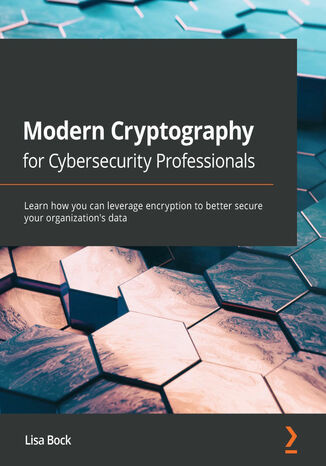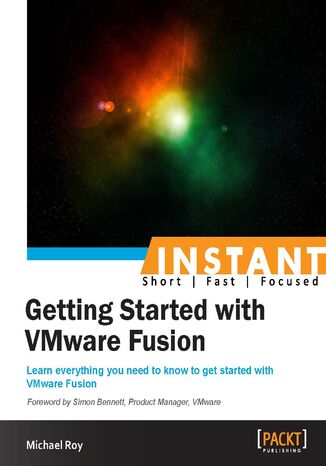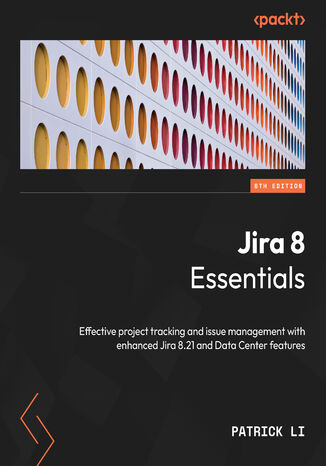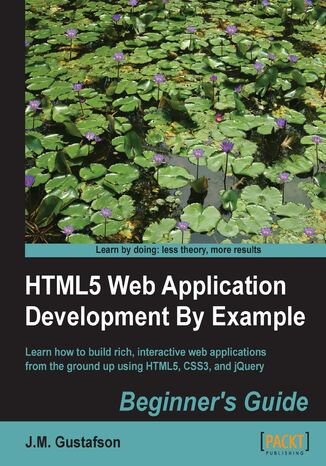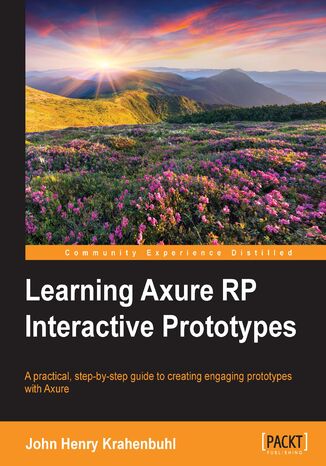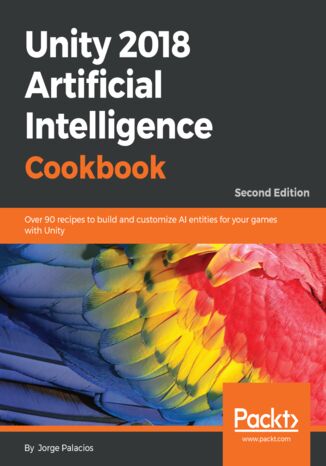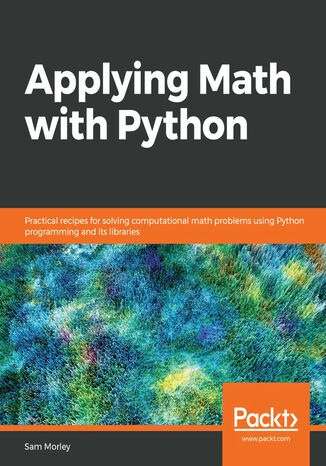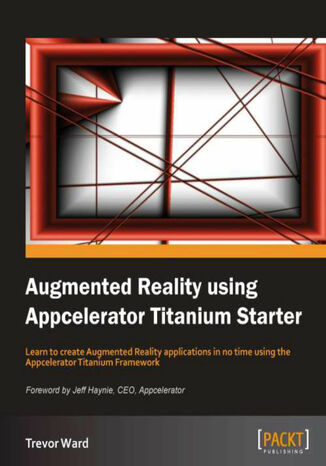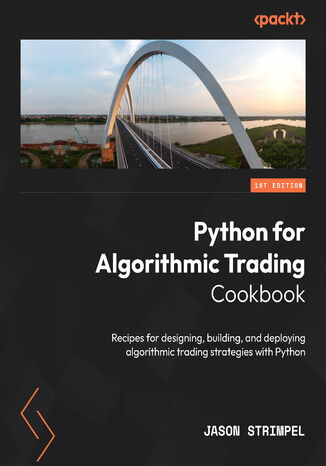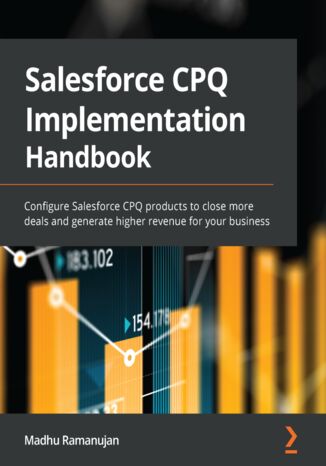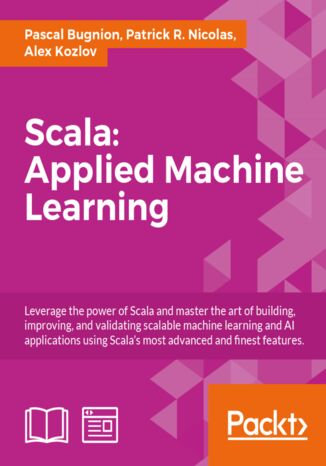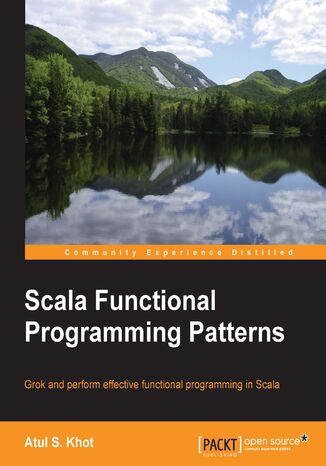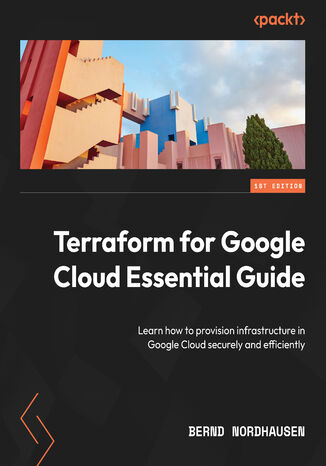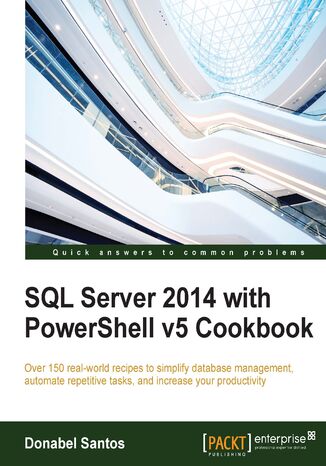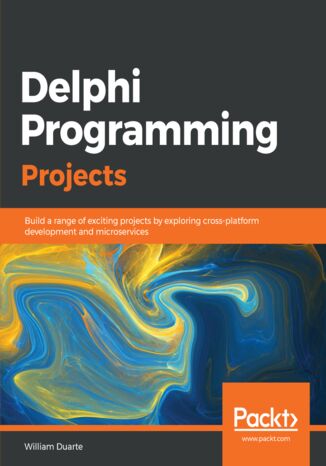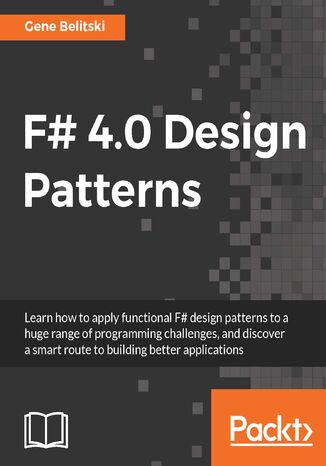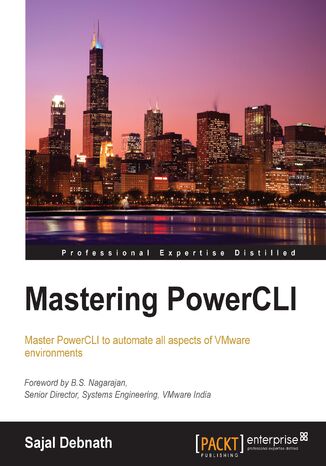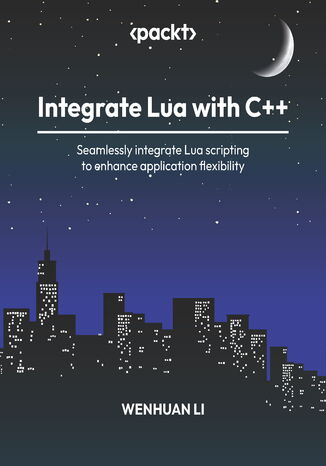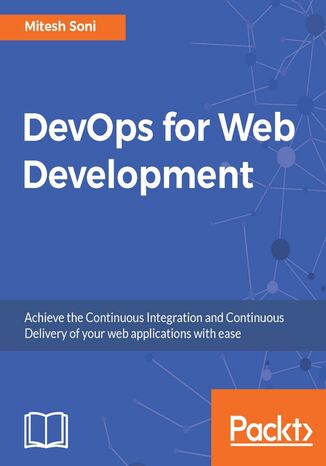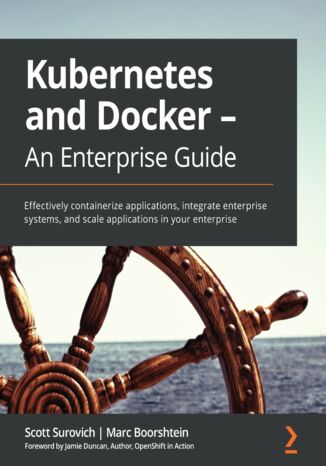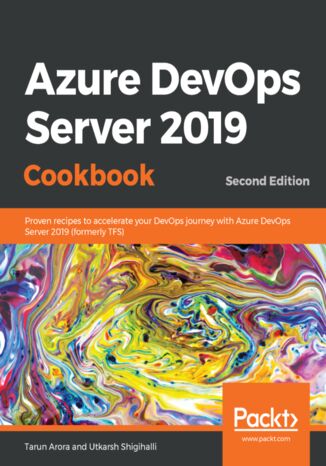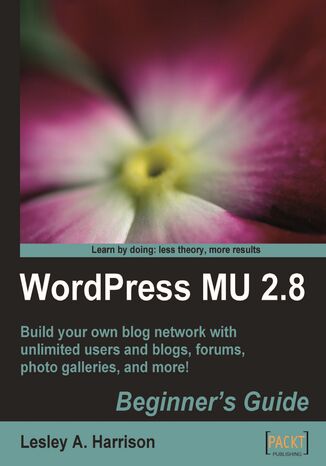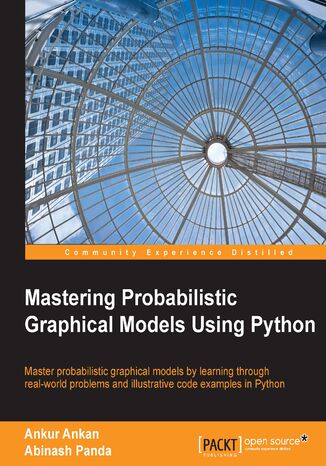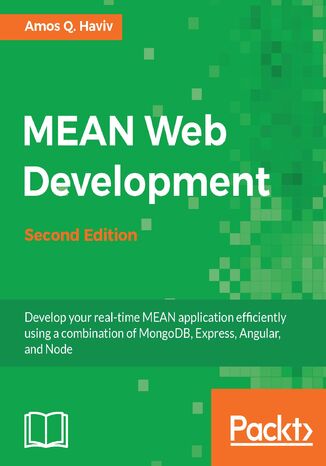Kategorien
E-Books
-
Wirtschaft
- Bitcoin
- Geschäftsfrau
- Coaching
- Controlling
- E-Business
- Ökonomie
- Finanzen
- Börse und Investitionen
- Persönliche Kompetenzen
- Computer im Büro
- Kommunikation und Verhandlungen
- Kleines Unternehmen
- Marketing
- Motivation
- Multimedia-Training
- Immobilien
- Überzeugung und NLP
- Steuern
- Sozialpolitik
- Handbȕcher
- Präsentationen
- Führung
- Public Relation
- Berichte, Analysen
- Geheimnis
- Social Media
- Verkauf
- Start-up
- Ihre Karriere
- Management
- Projektmanagement
- Personal (HR)
-
Für Kinder
-
Für Jugendliche
-
Bildung
-
Enzyklopädien, Wörterbücher
-
E-Presse
- Architektura i wnętrza
- Sicherheit und Gesundheit am Arbeitsplatz
- Biznes i Ekonomia
- Haus und Garten
- E-Business
- Ekonomia i finanse
- Esoterik
- Finanzen
- Persönliche Finanzen
- Unternehmen
- Fotografie
- Informatik
- HR und Gehaltsabrechnung
- Frauen
- Computer, Excel
- Buchhaltung
- Kultur und Literatur
- Wissenschaftlich und akademisch
- Umweltschutz
- meinungsbildend
- Bildung
- Steuern
- Reisen
- Psychologie
- Religion
- Landwirtschaft
- Buch- und Pressemarkt
- Transport und Spedition
- Gesundheit und Schönheit
-
Geschichte
-
Informatik
- Office-Programme
- Datenbank
- Bioinformatik
- IT Branche
- CAD/CAM
- Digital Lifestyle
- DTP
- Elektronik
- Digitale Fotografie
- Computergrafik
- Spiele
- Hacking
- Hardware
- IT w ekonomii
- Wissenschaftliche Pakete
- Schulbücher
- Computergrundlagen
- Programmierung
- Mobile-Programmierung
- Internet-Server
- Computernetzwerke
- Start-up
- Betriebssysteme
- Künstliche Inteligenz
- Technik für Kinder
- Webmaster
-
Andere
-
Fremdsprachen lernen
-
Kultur und Kunst
-
Lektüre
-
Literatur
- Anthologien
- Ballade
- Biografien und Autobiografien
- Für Erwachsene
- Drama
- Tagebücher, Memoiren, Briefe
- Epos
- Essay
- Science Fiction
- Felietonys
- Fiktion
- Humor, Satire
- Andere
- Klassisch
- Krimi
- Sachbücher
- Belletristik
- Mity i legendy
- Nobelpreisträger
- Kurzgeschichten
- Gesellschaftlich
- Okultyzm i magia
- Erzählung
- Erinnerungen
- Reisen
- Gedicht
- Poesie
- Politik
- Populärwissenschaftlich
- Roman
- Historischer Roman
- Prosa
- Abenteuer
- Journalismus
- Reportage
- Romans i literatura obyczajowa
- Sensation
- Thriller, Horror
- Interviews und Erinnerungen
-
Naturwissenschaften
-
Sozialwissenschaften
-
Schulbücher
-
Populärwissenschaft und akademisch
- Archäologie
- Bibliotekoznawstwo
- Filmwissenschaft
- Philologie
- Polnische Philologie
- Philosophie
- Finanse i bankowość
- Erdkunde
- Wirtschaft
- Handel. Weltwirtschaft
- Geschichte und Archäologie
- Kunst- und Architekturgeschichte
- Kulturwissenschaft
- Linguistik
- Literaturwissenschaft
- Logistik
- Mathematik
- Medizin
- Geisteswissenschaften
- Pädagogik
- Lehrmittel
- Populärwissenschaftlich
- Andere
- Psychologie
- Soziologie
- Theatrologie
- Teologie
- Theorien und Wirtschaftswissenschaften
- Transport i spedycja
- Sportunterricht
- Zarządzanie i marketing
-
Handbȕcher
-
Spielanleitungen
-
Professioneller und fachkundige Leitfaden
-
Jura
- Sicherheit und Gesundheit am Arbeitsplatz
- Geschichte
- Verkehrsregeln. Führerschein
- Rechtswissenschaften
- Gesundheitswesen
- Allgemeines. Wissenskompendium
- akademische Bücher
- Andere
- Bau- und Wohnungsrecht
- Zivilrecht
- Finanzrecht
- Wirtschaftsrecht
- Wirtschafts- und Handelsrecht
- Strafrecht
- Strafrecht. Kriminelle Taten. Kriminologie
- Internationales Recht
- Internationales und ausländisches Recht
- Gesundheitsschutzgesetz
- Bildungsrecht
- Steuerrecht
- Arbeits- und Sozialversicherungsrecht
- Öffentliches, Verfassungs- und Verwaltungsrecht
- Familien- und Vormundschaftsrecht
- Agrarrecht
- Sozialrecht, Arbeitsrecht
- EU-Recht
- Industrie
- Agrar- und Umweltschutz
- Wörterbücher und Enzyklopädien
- Öffentliche Auftragsvergabe
- Management
-
Führer und Reisen
- Afrika
- Alben
- Südamerika
- Mittel- und Nordamerika
- Australien, Neuseeland, Ozeanien
- Österreich
- Asien
- Balkan
- Naher Osten
- Bulgarien
- China
- Kroatien
- Tschechische Republik
- Dänemark
- Ägypten
- Estland
- Europa
- Frankreich
- Berge
- Griechenland
- Spanien
- Niederlande
- Island
- Litauen
- Lettland
- Mapy, Plany miast, Atlasy
- Miniführer
- Deutschland
- Norwegen
- Aktive Reisen
- Polen
- Portugal
- Andere
- Przewodniki po hotelach i restauracjach
- Russland
- Rumänien
- Slowakei
- Slowenien
- Schweiz
- Schweden
- Welt
- Türkei
- Ukraine
- Ungarn
- Großbritannien
- Italien
-
Psychologie
- Lebensphilosophien
- Kompetencje psychospołeczne
- zwischenmenschliche Kommunikation
- Mindfulness
- Allgemeines
- Überzeugung und NLP
- Akademische Psychologie
- Psychologie von Seele und Geist
- Arbeitspsychologie
- Relacje i związki
- Elternschafts- und Kinderpsychologie
- Problemlösung
- Intellektuelle Entwicklung
- Geheimnis
- Sexualität
- Verführung
- Aussehen ind Image
- Lebensphilosophien
-
Religion
-
Sport, Fitness, Diäten
-
Technik und Mechanik
Hörbücher
-
Wirtschaft
- Bitcoin
- Geschäftsfrau
- Coaching
- Controlling
- E-Business
- Ökonomie
- Finanzen
- Börse und Investitionen
- Persönliche Kompetenzen
- Kommunikation und Verhandlungen
- Kleines Unternehmen
- Marketing
- Motivation
- Immobilien
- Überzeugung und NLP
- Steuern
- Sozialpolitik
- Handbȕcher
- Präsentationen
- Führung
- Public Relation
- Geheimnis
- Social Media
- Verkauf
- Start-up
- Ihre Karriere
- Management
- Projektmanagement
- Personal (HR)
-
Für Kinder
-
Für Jugendliche
-
Bildung
-
Enzyklopädien, Wörterbücher
-
E-Presse
-
Geschichte
-
Informatik
-
Andere
-
Fremdsprachen lernen
-
Kultur und Kunst
-
Lektüre
-
Literatur
- Anthologien
- Ballade
- Biografien und Autobiografien
- Für Erwachsene
- Drama
- Tagebücher, Memoiren, Briefe
- Epos
- Essay
- Science Fiction
- Felietonys
- Fiktion
- Humor, Satire
- Andere
- Klassisch
- Krimi
- Sachbücher
- Belletristik
- Mity i legendy
- Nobelpreisträger
- Kurzgeschichten
- Gesellschaftlich
- Okultyzm i magia
- Erzählung
- Erinnerungen
- Reisen
- Poesie
- Politik
- Populärwissenschaftlich
- Roman
- Historischer Roman
- Prosa
- Abenteuer
- Journalismus
- Reportage
- Romans i literatura obyczajowa
- Sensation
- Thriller, Horror
- Interviews und Erinnerungen
-
Naturwissenschaften
-
Sozialwissenschaften
-
Populärwissenschaft und akademisch
- Archäologie
- Philosophie
- Wirtschaft
- Handel. Weltwirtschaft
- Geschichte und Archäologie
- Kunst- und Architekturgeschichte
- Kulturwissenschaft
- Literaturwissenschaft
- Mathematik
- Medizin
- Geisteswissenschaften
- Pädagogik
- Lehrmittel
- Populärwissenschaftlich
- Andere
- Psychologie
- Soziologie
- Teologie
- Zarządzanie i marketing
-
Handbȕcher
-
Professioneller und fachkundige Leitfaden
-
Jura
-
Führer und Reisen
-
Psychologie
- Lebensphilosophien
- zwischenmenschliche Kommunikation
- Mindfulness
- Allgemeines
- Überzeugung und NLP
- Akademische Psychologie
- Psychologie von Seele und Geist
- Arbeitspsychologie
- Relacje i związki
- Elternschafts- und Kinderpsychologie
- Problemlösung
- Intellektuelle Entwicklung
- Geheimnis
- Sexualität
- Verführung
- Aussehen ind Image
- Lebensphilosophien
-
Religion
-
Sport, Fitness, Diäten
-
Technik und Mechanik
Videokurse
-
Datenbank
-
Big Data
-
Biznes, ekonomia i marketing
-
Cybersicherheit
-
Data Science
-
DevOps
-
Für Kinder
-
Elektronik
-
Grafik / Video / CAX
-
Spiele
-
Microsoft Office
-
Entwicklungstools
-
Programmierung
-
Persönliche Entwicklung
-
Computernetzwerke
-
Betriebssysteme
-
Softwaretest
-
Mobile Geräte
-
UX/UI
-
Web development
-
Management
Podcasts
In today's world, it is important to have confidence in your data storage and transmission strategy. Cryptography can provide you with this confidentiality, integrity, authentication, and non-repudiation. But are you aware of just what exactly is involved in using cryptographic techniques? Modern Cryptography for Cybersecurity Professionals helps you to gain a better understanding of the cryptographic elements necessary to secure your data.The book begins by helping you to understand why we need to secure data and how encryption can provide protection, whether it be in motion or at rest. You'll then delve into symmetric and asymmetric encryption and discover how a hash is used. As you advance, you'll see how the public key infrastructure (PKI) and certificates build trust between parties, so that we can confidently encrypt and exchange data. Finally, you'll explore the practical applications of cryptographic techniques, including passwords, email, and blockchain technology, along with securely transmitting data using a virtual private network (VPN).By the end of this cryptography book, you'll have gained a solid understanding of cryptographic techniques and terms, learned how symmetric and asymmetric encryption and hashed are used, and recognized the importance of key management and the PKI.
Running Windows on your Mac can seem complicated, but this book will make things easy by showing you how to get the most out of VMware Fusion. Having a virtual copy of Windows on your Mac can let you make a secure backup of your files and run Windows applications, which makes your computer more versatile.This book will show you how to start running Windows on your Mac, with practical examples of how to keep your Virtual Machine secure, backed up, and running smoothly. You will learn about the new features of VMware Fusion 6 and where to get help and support for the software when you need it.This book will walk you through what you need to know to safely and securely run Windows on your Mac. It then proceeds to show you how to upgrade to Windows 8, and shows you how you can seamlessly switch between Windows 7 and Windows 8 using snapshots. Next, it covers all that you need to know to safely and securely run Windows on a Mac computer with Intel processors. You will also learn how to manage your Virtual Machine backups and keep your VM safe.The recipes in this book will give you a helpful head start in getting the most out of VMware Fusion 6.
This new and improved sixth edition comes with the latest Jira 8.21 Data Center offerings, with enhanced features such as clustering, advanced roadmaps, custom field optimization, and tools to track and manage tasks for your projects. This comprehensive guide to Jira 8.20.x LTS version provides updated content on project tracking, issue and field management, workflows, Jira Service Management, and security.The book begins by showing you how to plan and set up a new Jira instance from scratch before getting you acquainted with key features such as emails, workflows, and business processes. You’ll also get to grips with Jira’s data hierarchy and design and work with projects. Since Jira is used for issue management, this book will help you understand the different issues that can arise in your projects. As you advance, you’ll create new screens from scratch and customize them to suit your requirements. Workflows, business processes, and guides on setting up incoming and outgoing mail servers will be covered alongside Jira’s security model and Jira Service Management. Toward the end, you’ll learn how Jira capabilities are extended with third-party apps from Atlassian marketplace.By the end of this Jira book, you’ll have understood core components and functionalities of Jira and be able to implement them in business projects with ease.
J.M. Gustafson, Jody Gustafson
HTML5's new features have made it a real application development platform with widespread adoption throughout the industry for this purpose. Being able to create one application that can run on virtually any device from phone to desktop has made it the first choice among developers. Although JavaScript has been around for a while now, it wasn't until the introduction of HTML5 that we have been able to create dynamic, feature-rich applications rivaling those written for the desktop.HTML5 Web Application Development By Example will give you the knowledge you need to build rich, interactive web applications from the ground up, incorporating the most popular HTML5 and CSS3 features available right now. This book is full of tips, tools, and example applications that will get you started writing your own applications today.HTML5 Web Application Development By Example shows you how to write web applications using the most popular HTML5 and CSS3 features. This book is a practical, hands-on guide with numerous real-world and relevant examples.You will learn how to use local storage to save an application's state and incorporate CSS3 to make it look great. You will also learn how to use custom data attributes to implement data binding. We'll use the new Canvas API to create a drawing application, then use the Audio API to create a virtual piano, before turning it all into a game.The time to start using HTML5 is now. And HTML5 Web Application Development by Example will give you the tips and know-how to get started.
Interactive and engaging games come with intelligent enemies, and this intellectual behavior is combined with a variety of techniques collectively referred to as Artificial Intelligence. Exploring Unity's API, or its built-in features, allows limitless possibilities when it comes to creating your game's worlds and characters. This cookbook covers both essential and niche techniques to help you take your AI programming to the next level.To start with, you’ll quickly run through the essential building blocks of working with an agent, programming movement, and navigation in a game environment, followed by improving your agent's decision-making and coordination mechanisms – all through hands-on examples using easily customizable techniques. You’ll then discover how to emulate the vision and hearing capabilities of your agent for natural and humanlike AI behavior, and later improve the agents with the help of graphs. This book also covers the new navigational mesh with improved AI and pathfinding tools introduced in the Unity 2018 update. You’ll empower your AI with decision-making functions by programming simple board games, such as tic-tac-toe and checkers, and orchestrate agent coordination to get your AIs working together as one.By the end of this book, you’ll have gained expertise in AI programming and developed creative and interactive games.
Python, one of the world's most popular programming languages, has a number of powerful packages to help you tackle complex mathematical problems in a simple and efficient way. These core capabilities help programmers pave the way for building exciting applications in various domains, such as machine learning and data science, using knowledge in the computational mathematics domain.The book teaches you how to solve problems faced in a wide variety of mathematical fields, including calculus, probability, statistics and data science, graph theory, optimization, and geometry. You'll start by developing core skills and learning about packages covered in Python’s scientific stack, including NumPy, SciPy, and Matplotlib. As you advance, you'll get to grips with more advanced topics of calculus, probability, and networks (graph theory). After you gain a solid understanding of these topics, you'll discover Python's applications in data science and statistics, forecasting, geometry, and optimization. The final chapters will take you through a collection of miscellaneous problems, including working with specific data formats and accelerating code.By the end of this book, you'll have an arsenal of practical coding solutions that can be used and modified to solve a wide range of practical problems in computational mathematics and data science.
Titanium Mobile has quickly become the platform of choice for many mobile developers and is growing and changing at a rapid rate. From the implementation of CommonJS, Cloud Services, MVC design patterns and more, the last year in Titanium development has been a roller coaster of change for the better. Augmented Reality is a hot area for mobile applications and this book along with the augmentedTi open source application will give a great start to all augmented applications. This book will show you how to build an Augmented Reality application, which is clean, efficient and usable. It shows how to hide the processing from the user and build a display which updates and rotates smoothly.Mobile devices have got more powerful, but they still have limitations. Augmented Reality applications test these devices to breaking point and without the correct coding techniques make the applications unresponsive and cumbersome.This book gives a solution, which will enable you to build an effective application, and is accompanied by a complete working application and source code. It's essential for anybody who is creating a multiple points of interest augmented reality application. It shows how to build this type of application efficiently and takes into consideration the devices limitations and processing capabilities.
Discover how Python has made algorithmic trading accessible to non-professionals with unparalleled expertise and practical insights from Jason Strimpel, founder of PyQuant News and a seasoned professional with global experience in trading and risk management. This book guides you through from the basics of quantitative finance and data acquisition to advanced stages of backtesting and live trading.Detailed recipes will help you leverage the cutting-edge OpenBB SDK to gather freely available data for stocks, options, and futures, and build your own research environment using lightning-fast storage techniques like SQLite, HDF5, and ArcticDB. This book shows you how to use SciPy and statsmodels to identify alpha factors and hedge risk, and construct momentum and mean-reversion factors. You’ll optimize strategy parameters with walk-forward optimization using VectorBT and construct a production-ready backtest using Zipline Reloaded. Implementing all that you’ve learned, you’ll set up and deploy your algorithmic trading strategies in a live trading environment using the Interactive Brokers API, allowing you to stream tick-level data, submit orders, and retrieve portfolio details.By the end of this algorithmic trading book, you'll not only have grasped the essential concepts but also the practical skills needed to implement and execute sophisticated trading strategies using Python.
Salesforce CPQ is innovative software that enables you create better quotes, improve quoting accuracy, and maximize sales and deals. It also provides a quick analysis of profits and losses, helping you improve the overall execution of sales processes, and allows a great deal of flexibility for your prospects, customers, and business partners.The book starts with the Quote-2-Cash business process in Salesforce and shows you how to assess when a business needs to implement CPQ. You’ll then progress to configuring opportunities, quotes, and CPQ products. As you advance, you’ll understand how to define and configure price books, price rules for CPQ quote automation, multidimensional quoting, and more. Next, you'll look at how to configure CPQ guided selling and create package configurations, contracts, and amendments. Later chapters will demonstrate how to perform data migration from a legacy system and the order in which the objects are to be migrated. You’ll also explore CPQ billing and its advantages with the help of different use cases before learning about Industries CPQ and how it is different from standard Salesforce CPQ. Finally, you’ll discover best practices for achieving optimal CPQ performance and avoiding performance bottlenecks.By the end of this Salesforce book, you’ll be able to implement Salesforce CPQ for any business.
Scala: Applied Machine Learning. Master the art of Machine Learning in Scala
Patrick R. Nicolas, Alex Kozlov, Pascal Bugnion
This Learning Path aims to put the entire world of machine learning with Scala in front of you. Scala for Data Science, the first module in this course, is a tutorial guide that provides tutorials on some of the most common Scala libraries for data science, allowing you to quickly get up to speed building data science and data engineering solutions.The second course, Scala for Machine Learning guides you through the process of building AI applications with diagrams, formal mathematical notation, source code snippets, and useful tips. A review of the Akka framework and Apache Spark clusters concludes the tutorial.The next module, Mastering Scala Machine Learning, is the final step in this course. It will take your knowledge to next level and help you use the knowledge to build advanced applications such as social media mining, intelligent news portals, and more. After a quick refresher on functional programming concepts using REPL, you will see some practical examples of setting up the development environment and tinkering with data. We will then explore working with Spark and MLlib using k-means and decision trees.By the end of this course, you will be a master at Scala machine learning and have enough expertise to be able to build complex machine learning projects using Scala.This Learning Path combines some of the best that Packt has to offer in one complete, curated package. It includes content from the following Packt products:? Scala for Data Science, Pascal Bugnion? Scala for Machine Learning, Patrick Nicolas? Mastering Scala Machine Learning, Alex Kozlov
Scala Functional Programming Patterns. Grok and perform effective functional programming in Scala
Scala is used to construct elegant class hierarchies for maximum code reuse and extensibility and to implement their behavior using higher-order functions. Its functional programming (FP) features are a boon to help you design “easy to reason about” systems to control the growing software complexities. Knowing how and where to apply the many Scala techniques is challenging. Looking at Scala best practices in the context of what you already know helps you grasp these concepts quickly, and helps you see where and why to use them. This book begins with the rationale behind patterns to help you understand where and why each pattern is applied. You will discover what tail recursion brings to your table and will get an understanding of how to create solutions without mutations. We then explain the concept of memorization and infinite sequences for on-demand computation. Further, the book takes you through Scala’s stackable traits and dependency injection, a popular technique to produce loosely-coupled software systems.You will also explore how to currying favors to your code and how to simplify it by de-construction via pattern matching. We also show you how to do pipeline transformations using higher order functions such as the pipes and filters pattern. Then we guide you through the increasing importance of concurrent programming and the pitfalls of traditional code concurrency. Lastly, the book takes a paradigm shift to show you the different techniques that functional programming brings to your plate.This book is an invaluable source to help you understand and perform functional programming and solve common programming problems using Scala’s programming patterns.
Google Cloud has adopted Terraform as the standard Infrastructure as Code tool. This necessitates a solid understanding of Terraform for any cloud architect or engineer working on Google Cloud. Yet no specific resources are available that focus on how to use Terraform on Google Cloud.This is the first book that teaches Terraform specifically for Google Cloud. You will take a journey from the basic concepts through to deploying complex architectures using Terraform. Using extensive code examples, you will receive guidance on how to authenticate Terraform in Google Cloud. As you advance, you’ll get to grips with all the essential concepts of the Terraform language as applied to Google Cloud and deploy complete working architectures at the push of a button. Finally, you’ll also be able to improve your Terraform workflow using Google Cloud native and third-party tools.By the end of this Terraform book, you will have gained a thorough understanding of Terraform and how to use it on Google Cloud, and be able to develop effective Terraform code, build reusable code, and utilize public domain Terraform modules to deploy on Google Cloud faster and more securely.
Delphi is a cross-platform programming language and software development kit that supports rapid application development for Microsoft Windows, Apple Mac OS X, Android, and iOS.With the help of seven practical projects, this book will guide you through the best practices, Delphi Run-Time Library (RTL) resources, and design patterns. Whether you use the Visual Component Library (VCL) or FireMonkey (FMX) framework, these design patterns will be implemented in the same way in Delphi, using Object Pascal. In the first few chapters, you will explore advanced features that will help you build rich applications using the same code base for both mobile and desktop projects. In addition to this, you’ll learn how to implement microservice architecture in Delphi. As you get familiar with the various aspects of Delphi, you will no longer need to maintain source code for similar projects, program business rules on screens, or fill your forms with data access components.By the end of this book, you will have gained an understanding of the principles of clean code and become proficient in building robust and scalable applications in Delphi.
F# 4.0 Design Patterns. Solve complex problems with functional thinking
Following design patterns is a well-known approach to writing better programs that captures and reuses high-level abstractions that are common in many applications. This book will encourage you to develop an idiomatic F# coding skillset by fully embracing the functional-first F# paradigm. It will also help you harness this powerful instrument to write succinct, bug-free, and cross-platform code.F# 4.0 Design Patterns will start off by helping you develop a functional way of thinking. We will show you how beneficial the functional-first paradigm is and how to use it to get the optimum results. The book will help you acquire the practical knowledge of the main functional design patterns, the relationship of which with the traditional Gang of Four set is not straightforward.We will take you through pattern matching, immutable data types, and sequences in F#. We will also uncover advanced functional patterns, look at polymorphic functions, typical data crunching techniques, adjusting code through augmentation, and generalization. Lastly, we will take a look at the advanced techniques to equip you with everything you need to write flawless code.
Mastering PowerCLI. Master PowerCLI to automate all aspects of VMware environments
Have you ever wished that every morning you could automatically get a report with all the relevant information about your datacenter in exactly the same format you want? Or whether you could automate that boring, exhausting task? What if some crucial task needs to be performed on a regular basis without any error? PowerCLI scripts do all that and much more for VMware environments. It is built on top of the popular Windows PowerShell, with which you can automate server tasks and reduce manual input, allowing you to focus on more important tasks.This book will help you to achieve your goals by starting with a short refresher on PowerShell and PowerCLI and then covering the nuances of advanced functions and reusable scripts. Next you will learn how to build a vSphere-powered virtualized datacenter using PowerCLI while managing different aspects of the environment including automated installation, network, and storage. You will then manage different logical constructs of vSphere environment and different aspects of a virtual machine. Later, you will implement the best practices for a security implementation in vSphere Environment through PowerCLI before discovering how to manage other VMware environments such as SRM, vCloud Director and vCloud Air through PowerCLI. You will also learn to manage vSphere environments using advanced properties by accessing vSphere API and REST APIs through PowerCLI. Finally, you will build a Windows GUI application using PowerShell followed by a couple of sample scripts for reporting and managing vSphere environments with detailed explanations of the scripts. By the end of the book, you will have the required in-depth knowledge to master the art of PowerCLI scripting.
Integrate Lua with C++. Seamlessly integrate Lua scripting to enhance application flexibility
C++ is a popular choice in the developer community for building complex and large-scale performant applications and systems. Often a need arises to extend the system at runtime, without recompiling the whole C++ program. Using a scripting language like Lua can help achieve this goal efficiently.Integrate Lua to C++ is a comprehensive guide to integrating Lua to C++ and will enable you to achieve the goal of extending C++ programs at runtime. You’ll learn, in sequence, how to get and compile the Lua library, the Lua programming language, calling Lua code from C++, and calling C++ code from Lua. In each topic, you’ll practice with code examples, and learn the in-depth mechanisms for smooth working. Throughout the book, the latter examples build on the earlier ones while also acting as a standalone. You’ll learn to implement Lua executor and Lua binding generator, which you can use in your projects directly with further customizations.By the end of this book, you’ll have mastered integrating Lua into C++ and using Lua in your C++ project efficiently, gained the skills to extend your applications at runtime, and achieved dynamic and adaptable C++ development.
DevOps for Web Development. Click here to enter text
The DevOps culture is growing at a massive rate, as many organizations are adopting it. However, implementing it for web applications is one of the biggest challenges experienced by many developers and admins, which this book will help you overcome using various tools, such as Chef, Docker, and Jenkins. On the basis of the functionality of these tools, the book is divided into three parts. The first part shows you how to use Jenkins 2.0 for Continuous Integration of a sample JEE application. The second part explains the Chef configuration management tool, and provides an overview of Docker containers, resource provisioning in cloud environments using Chef, and Configuration Management in a cloud environment. The third part explores Continuous Delivery and Continuous Deployment in AWS, Microsoft Azure, and Docker, all using Jenkins 2.0.This book combines the skills of both web application deployment and system configuration as each chapter contains one or more practical hands-on projects. You will be exposed to real-world project scenarios that are progressively presented from easy to complex solutions. We will teach you concepts such as hosting web applications, configuring a runtime environment, monitoring and hosting on various cloud platforms, and managing them. This book will show you how to essentially host and manage web applications along with Continuous Integration, Cloud Computing, Configuration Management, Continuous Monitoring, Continuous Delivery, and Deployment.
Scott Surovich, Marc Boorshtein
Containerization has changed the DevOps game completely, with Docker and Kubernetes playing important roles in altering the flow of app creation and deployment. This book will help you acquire the knowledge and tools required to integrate Kubernetes clusters in an enterprise environment.The book begins by introducing you to Docker and Kubernetes fundamentals, including a review of basic Kubernetes objects. You’ll then get to grips with containerization and understand its core functionalities, including how to create ephemeral multinode clusters using kind. As you make progress, you’ll learn about cluster architecture, Kubernetes cluster deployment, and cluster management, and get started with application deployment. Moving on, you’ll find out how to integrate your container to a cloud platform and integrate tools including MetalLB, externalDNS, OpenID connect (OIDC), pod security policies (PSPs), Open Policy Agent (OPA), Falco, and Velero. Finally, you will discover how to deploy an entire platform to the cloud using continuous integration and continuous delivery (CI/CD).By the end of this Kubernetes book, you will have learned how to create development clusters for testing applications and Kubernetes components, and be able to secure and audit a cluster by implementing various open-source solutions including OpenUnison, OPA, Falco, Kibana, and Velero.
Tarun Arora, Utkarsh Shigihalli
Previously known as Team Foundation Server (TFS), Azure DevOps Server is a comprehensive on-premise DevOps toolset with a rich ecosystem of open source plugins. This book will help you learn how to effectively use the different Azure DevOps services.You will start by building high-quality scalable software targeting .NET, .NET Core and Node.js applications. Next, you will learn techniques that will help you to set up end-to-end traceability of your code changes, from design through to release. Whether you are deploying software on-premise or in the cloud in App Service, Functions, or Azure VMs, this book will help you learn release management techniques to reduce failures. As you progress, you will be able to secure application configuration by using Azure Key Vault. You will also understand how to create and release extensions to the Azure DevOps marketplace and reach the million-strong developer ecosystem for feedback. Later, the working extension samples will even allow you to iterate changes in your extensions easily and release updates to the marketplace quickly.By the end of this book, you will be equipped with the skills you need to break down the invisible silos between your software development teams, and transform them into a modern cross-functional software development team.
Lesley Harrison, Lesley A Harrison, Matt Mullenweg
WordPress MU enables you to build a complete, professional blog network. Each user gets their own blog, and can choose their favorite templates and plug-ins, and develop their own content. WordPress MU powers some of the largest blog networks in the world, including the mighty WordPress.com ñ home to thousands of bloggers.This book will take you through the setup of a WordPress MU-powered blogging network, using a real, working blog network as an example, so that you can follow the creation process step-by-step. Your blogging network will be complete with professional features such as friends lists, status feeds, groups, forums, photo galleries, and more, to build your own WordPress.com ñ a place where users can quickly come and create a blog for themselves.The book starts with a clean install of WordPress MU, and as you work through the book, you will build the blog network, and add on more and more features, all seamlessly integrated to achieve a professional, custom-built look.You will find new themes and plug-ins added to the site, as well as customization of the WordPress multi-user code. The book will also look at ways you can manage your community, and keep your site safe and secure, ensuring that it is a spam-free, enjoyable community for your users. In the later chapters, you will add a forum using the bbPress script, and add BuddyPress social networking components to your site.Imagine how good you'll feel when your first WordPress multi-user blog network launches.
The MEAN stack is a collection of the most popular modern tools for web development that helps you build fast, robust, and maintainable web applications.Starting with the MEAN core frameworks, this pragmatic guide will explain the key concepts of each framework, how to set them up properly, and how to use popular modules to connect it all together. By following the real-world examples shown in this tutorial, you will scaffold your MEAN application architecture, add an authentication layer, and develop an MVC structure to support your project development. You will learn the best practices of maintaining clear and simple code and will see how to avoid common pitfalls. Finally, you will walk through the different tools and frameworks that will help expedite your daily development cycles.Watch how your application development grows by learning from the only guide that is solely orientated towards building a full, end-to-end, real-time application using the MEAN stack!

